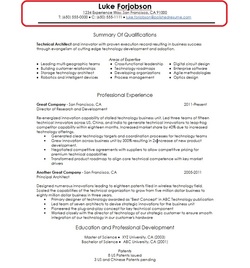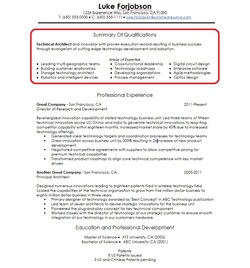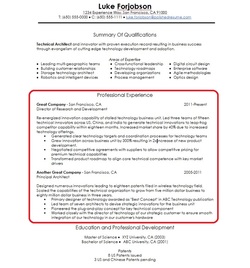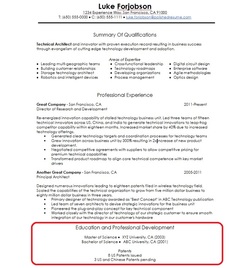- Word (.docx) format
- File size: 122 kB
Download this template
Professional Resume Template
- Word (.docx) format
- File size: 121 kB
Download this template
Modern Icon Resume Template
- Word (.docx) format
- File size: 237 kB
Download this template
Infographic Resume Template
- Word (.docx) format
- File size: 113 kB
Download this template
Creative Resume Template
- Word (.docx) format
- File size: 84 kB
Download this template
Simple Resume Template
- Word (.docx) format
- File size: 202 kB
Download this template
Modern Intern Resume Template
- Word (.docx) format
- File size: 151 kB
Download this template
Modern Logo Resume Template
- Word (.docx) format
- File size: 117 kB
Download this template
Modern Tech Resume Template
How to Write a Resume
Everyone knows the value of a crisp, effective resume — a polished resume. Whether you’re seeking a career change or simply refining your professional story, this process is an important step.
We understand that it doesn’t always feel exciting. Transitions are often accompanied by uncertainty or even anxiety. Take comfort in knowing that these feelings are completely normal. What many people overlook is that updating a resume isn’t just about formatting — it requires introspection. It’s a process of discovering and re-discovering who you are, what you’ve accomplished, and where you want to go.
Our team of counselors and industry experts is here to support you through that process, helping you present the best of what you have to offer — with confidence and clarity.
While countless online resources offer resume examples, we’ve also provided several free templates on this page. Still, a resume’s true impact comes from the content — which is why we’ve created a fictitious resume that demonstrates a modern, well-balanced format.
In the sections below, we’ll walk you through the major components of this sample resume and highlight key tips for each area. We invite you to explore these insights and apply them to your own resume.
Meet our fictional job seeker: Luke Forjobson.
Resume Headings

Your resume heading should, at a minimum, include your full name, phone number, and email address. Many candidates also choose to include a LinkedIn profile or personal website — while optional, these can help showcase your professional presence more fully. That said, most employers today are adept at finding these details even if not explicitly listed.
There are a few subtle but important formatting choices to consider in your heading. For example, font selection can make a big difference in clarity and tone. Professional fonts like Arial, Times New Roman, or Century Gothic are widely accepted for their clean, distraction-free appearance. You’ll notice that in Luke’s resume, the email address is shown in blue. Traditionally, resumes were purely black and white, but this was largely due to printer limitations. Today, a judicious use of color — such as a blue hyperlink — can be perfectly acceptable and even helpful in drawing the reader’s eye, as long as it’s used with restraint.
Luke also chose to include a horizontal separator line between the heading and his Summary of Qualifications — a simple design element that helps structure the page visually. These small stylistic decisions — such as using lines, adjusting spacing, or aligning sections — contribute significantly to the overall polish and readability of your resume. If you’re curious how your own resume might look with different formats, spacing, or styles, you can explore our free dynamic resume builder, which lets you visually preview your content in a variety of clean formats:
👉 Try the Resume Builder
Just below the heading, you’ll find what is arguably one of the most important sections: the Summary of Qualifications. This section sets the tone for your resume and offers a snapshot of what makes you uniquely valuable. It’s not just a recap of your experience — it’s your opportunity to reflect on your strengths, motivations, and the impact you bring. Crafting a strong summary often requires introspection. It can be challenging to distill your story into a few impactful lines — and we’ll talk about that more in the next section.
Summary of Qualifications / Resume Objective

If a resume serves as your first impression, then the Summary of Qualifications—sometimes labeled as the “Objective,” “Overview,” or “Profile”—acts as the first impression of your resume. This section should offer a concise and compelling snapshot of your passions and key accomplishments. A hiring manager should be able to quickly identify the types of complex problems you are well-equipped to solve.
While some candidates still use an “Objective” statement in this section, this approach presents two common issues:
-
Lack of differentiation – Objective statements tend to be generic and fail to distinguish you from other applicants.
-
Oversimplification – Most roles, especially beyond entry level, involve complex challenges that aren’t adequately captured by simply stating a job title or career goal.
In the example below, note how Luke chose to highlight his areas of expertise in a bulleted list. This is an effective strategy for this section. Remember: the focus of your resume should be your passions and success highlights.
Given that the average resume receives less than a minute of attention, a strong Summary of Qualifications is crucial. Employers often decide whether to continue reading based on this section alone—so make it count by aligning it with your unique value, leadership style, and professional preferences. To support your introspection process, we offer free online resources: Self-Discovery Tools as well as personalized coaching: Work with Us.
Professional Experience on Your Resume

A strong resume is like a well-crafted essay. Just as an essay presents a clear thesis, your resume should communicate a central message: your passions and experiences uniquely position you to solve the challenges faced by your prospective employer. The Professional Experience section provides the evidence that supports this thesis.
Take note of how Luke approaches this section. For each role, he includes a concise summary of the impact he made at the organization. He then follows with three to four bullet points that highlight key accomplishments contributing to that impact. Every example reinforces his core professional message: that he is an innovator with a proven execution record.
This approach ensures the resume remains focused and purposeful—not just a list of job duties or unrelated achievements. Each entry is strategically chosen to support the overall narrative.
A quick note on length: while there’s no hard-and-fast rule, most professional resumes in the U.S. are ideally no longer than two pages. Expectations can vary by country and industry, but in the U.S., this guideline is widely accepted and helps ensure the content remains relevant and impactful.
Education and Skills to Put on a Resume

In keeping with the “thesis” outlined in his Summary of Qualifications, Luke chose to include his academic degrees and patents—the two sections most relevant to his professional narrative. These credentials directly support the unique value he brings to an employer and reinforce the core message of his resume.
Candidates often ask whether they should include personal interests or hobbies. While Luke enjoys hiking, this detail isn’t included, as it doesn’t directly contribute to his overarching thesis. Unless a hobby meaningfully supports the professional story you’re telling—such as demonstrating leadership, resilience, or creativity—it’s best to leave it off.
Similarly, Luke opted not to include a Skills section listing basic tools like Microsoft Word, Excel, or Outlook. At his level, proficiency in these programs is assumed. However, if a candidate has expertise in specialized tools—such as computer-aided design (CAD) software—it may be worthwhile to include those in a dedicated Skills section, especially if they’re directly relevant to the desired role.
The key takeaway: Every section on your resume should be intentional. Don’t include content just to fill space. Only add information that strengthens your professional narrative and sets you apart from other candidates.
Congratulations! We’ve now covered all the major sections of a strong, well-crafted resume. We hope this has been helpful as you begin shaping your own. Once you have a solid draft, feel free to connect with our team for expert, personalized coaching to help refine and elevate your resume:
👉 Contact Us for one-on-one guidance and support.
